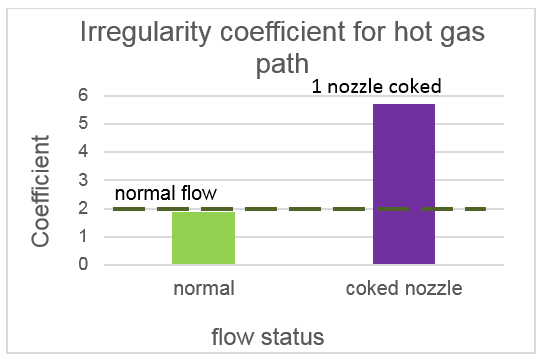In practice, the engine diagnostics is carried out within the system of technical measuring means and signal analysis. To monitor the status of all units of the engine, the system must meet the specifications of the technology which implements Vibropassport of the engine. Vibropassport of the engine type is a combination of methods, software and data.
The methods are developed based on the vibration formation models. Algorithms of data processing and calculation of diagnostic parameters are based on these models. In turn, software modules are developed on the basis of these algorithms. Upper and lower limits of the diagnostic parameters obtained in the course of tests and fleet statistics complement Vibropassport.

DID YOU KNOW ...
GE90-115B – the largest and most powerful aircraft jet engine in the world, producing torque up to 58000 kg.
Aircraft gas-turbine engine (GTE) is built on the interaction of different types of mechanisms involved
in the formation of vibration:


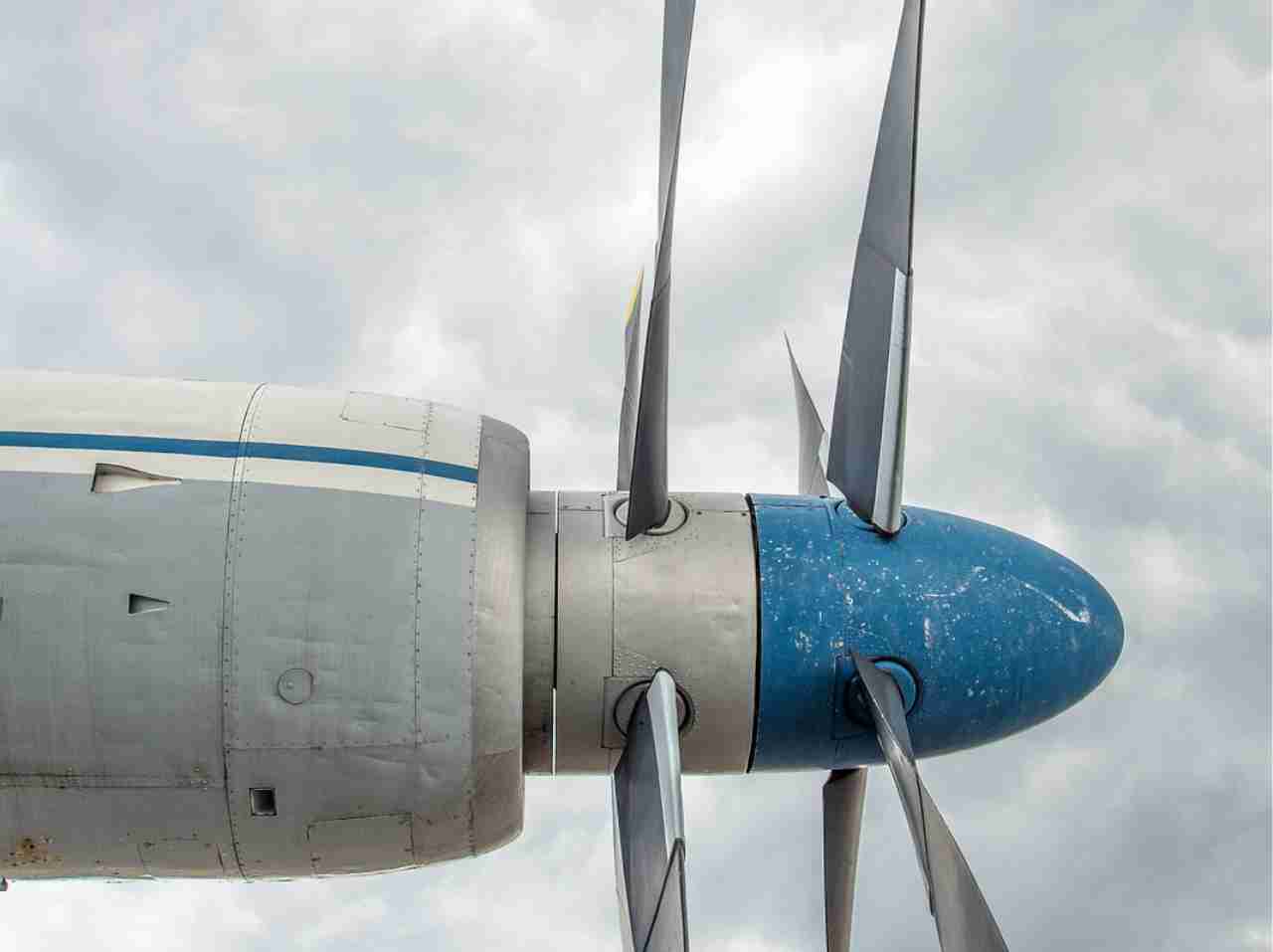

Condition of all the above is to be monitored, since even a small deviation from the calculated operation mode may result in significant or irreparable loss.
At the same time, the same deviations may be used for early detection and identification of the defect. The fact is, that the vibration sensor "hears" all units of the running aircraft engine, including strap-on engines which are mounted on the motor housing. Therefore, by extracting necessary information from the vibration signals, you can diagnose the majority of possible defects or deviations from the design operation mode.
Diagnostics of such complex machines as modern aircraft engines requires comprehensive approach, including modelling of vibration formation, taking into account the structural features of GTE.
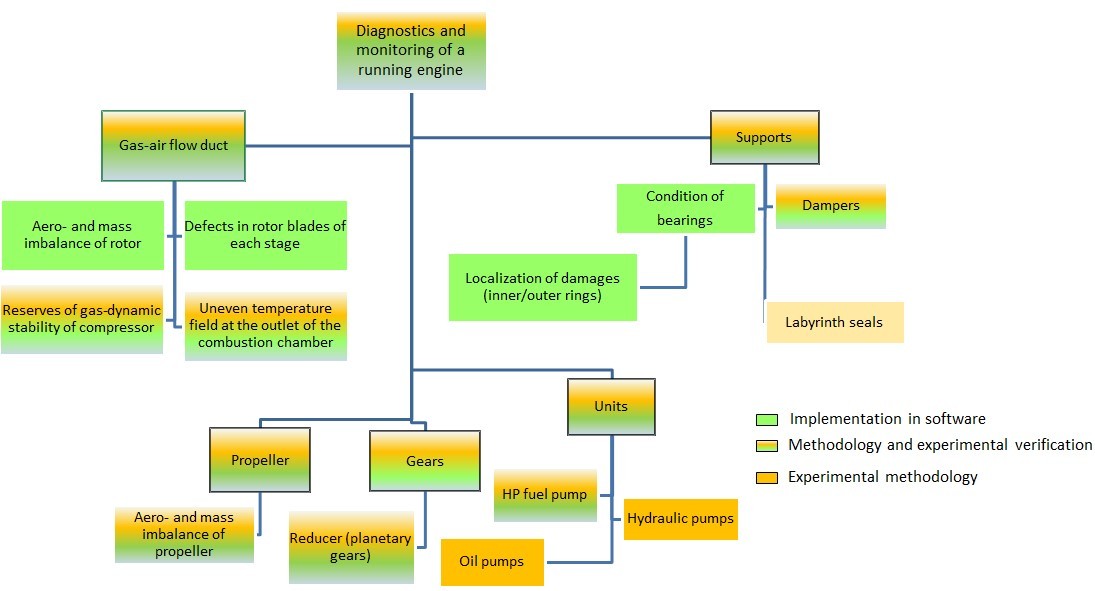
The formation model of aircraft engine vibration takes into account the operation principles common to all aircraft engines, as well as features of the mechanism of formation and transmission of each units vibration on the engine housing, where the sensor is installed.
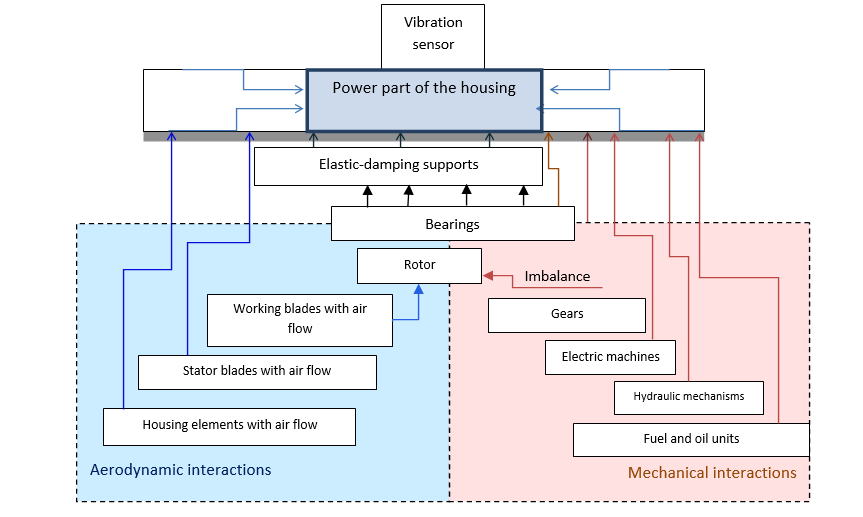
Unlike simplified models created previously for solving the problems of durability and reliability, we use the models which take into account the impulse nature of aerodynamic and mechanical interactions of a gas turbine engine parts, spatial arrangement and nonlinear interaction of vibration sources.
The problem in planetary gearbox vibration diagnostics is that satellites gears or idler pinions rotate with the same speed, thus masking possible defect from fault one. For example, quite often cause of malfunction in planetary gearbox is uneven load distribution between satellites. If it is essential, then it causes faster wear and tear of overloaded gears and their bearings, which in its turn brings gearbox to a pre-term failure.
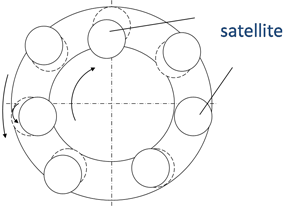
We have developed a new method for planetary gears vibration diagnostics that takes into account impulse nature of gear teeth interaction. This method utilizes signal processing of vibration and output shaft rotation phase in time domain. Using this method for operating gearbox it is possible to estimate distribution of dynamic loads between satellites, e.g. while performing tests on a rig. Such estimation allows controlling gearbox assembly quality and point out those which are predisposed to excessive wear and pre-term failure.
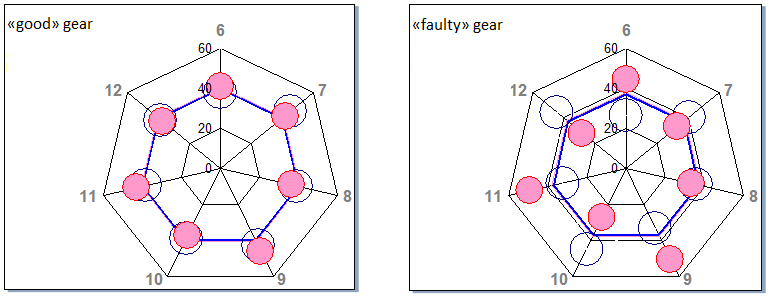
Load magnitude for each idler is set on a corresponding radius on the diagram. Blue transparent circle signifies load parameter value for gear with outer teethed rim, rose one – for gear with central teethed rim. Areas, where blue and rose circles coincide or are close to each other, have identical or similar dynamic loads between central and periferal gear meshes (“good” gear). Divergence of circles means that there is a difference in loads (two times difference for the “faulty” gear).
The air-gas channel of the GTE (gas-turbine engine) is its power-producing core, and any deviation from the design regime leads to the loss of its efficiency, not to mention the risk of mechanical damage. The Vibropassport allows controlling both the operation mode deviations and violation of the geometry of all of the air-gas channel elements, caused by the influence of design-manufacturing factors or damage in the operational process (wear and tear, foreign objects, contaminants, coking of nozzles and the like).
Here are some examples of diagnostics of the defects of air-gas channel, ensured by the use of parameters of the Vibropassport.
Most of the existing methods of balancing GTE rotors do not take into account that the total imbalance of the fan and compressor of aircraft engine is formed under the influence of both mass and aerodynamic imbalance. The latter arises from a mismatch of the thrust vector of bladed rotor with its axis of rotation. The ratio of aero- and mass imbalances depends on the design-manufacturing and operational factors, therefore the aerodynamic imbalance can significantly affect the operation of gas turbine engine.
For example, when working on ground aero- and mass imbalance may counterbalance each other, but with a change in engine operating mode (e.g., during flight), their ratio will vary. If the role of the aerodynamic imbalance is large, the balancing of the rotor, excluding the aerodynamic component on ground, can lead to an increased unbalanced loads in flight and the vibration exceeding acceptable limits.
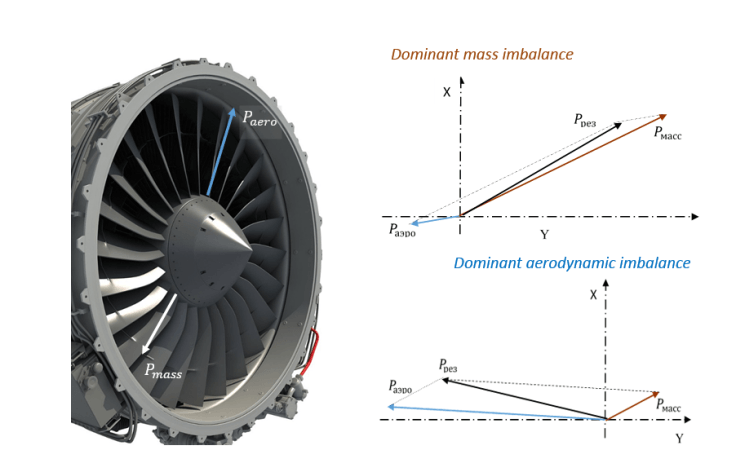
By separating aerodynamic and mass imbalance, the Vibropassport provides an estimate of the mutual ratio and location of vectors of aerodynamic and mass imbalance.
If in the engine with the dominant mass imbalance the vibration does not essentially depend on the flight mode, then the vibration of the engine, the imbalance of which is almost entirely determined by the aerodynamic imbalance, will change accordingly with flight mode. To avoid possible problems with the vibration, the compressor rotor of such engine should be additionally balanced by changing the relative ratio of the vectors.
The aerodynamic imbalance of compressor results from aerodynamic imbalances of its separate stages. The aerodynamic imbalance of stages is formed during the manufacturing process due to, for example, the process error in the manufacture of grooves in the disk, scattering of geometric properties of the blades, or their partial replacement. The aerodynamic imbalance can vary during operation, e.g. as a result of alignment of blade locks or foreign objects.
Evaluation of the contribution of aerodynamic imbalance of individual stages may be required for various reasons. For example, if the engine, when tested on the stand, shows an increased vibration level, then in order to minimize the cost for engine fine-tuning it is necessary to determine the cause of increase and if it is the aerodynamic imbalance then to identify its sources (stages). During operation it is important to identify changes in the condition of the compressor stage, for example, due to damage of rotor blades, which, unlike the fan blades are not available for inspection after each flight.
Parameters of the Vibropassport evaluating the aerodynamic imbalance and aerodynamic inhomogeneity of each stage, allow solving the problems such as the fine-tuning of engines in the manufacture and monitoring the compressor condition in flight.
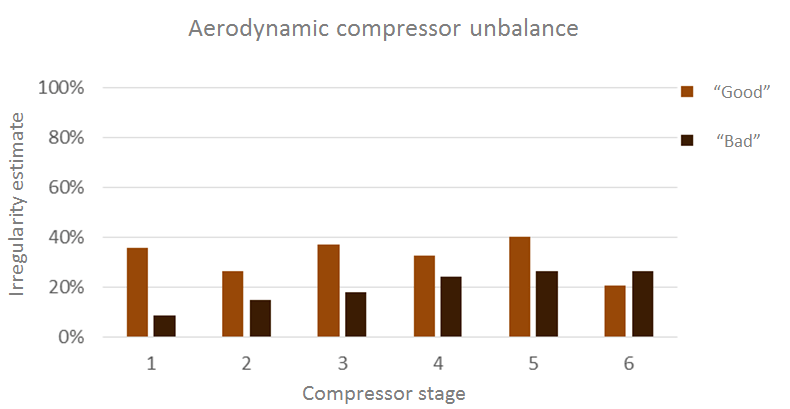
For example, in the engine with low aerodynamic imbalance ("good"), the parameters of aerodynamic unevenness of stages were considerably lower than in the engine with significant aerodynamic imbalance.
Vibropassport also allows assessing the reduction of the reserves of gas-dynamic stability of the compressor, which can cause changes in the geometry of air-gas channel during operation.
Uneven fuel spraying in the combustion chamber is often the cause of premature engine removal. In operation conditions the most likely cause of this defect is fuel injector coking. Early detection of problems with fuel injectors allows minimizing costs, reducing them to the replacement of the combustion chamber module. If the defect is not detected, the result of its development can be a burn-out of chamber wall and damage to other parts, destruction of the fuel injector apparatus and rotor blades. At best, this would require the replacement of the turbine module, while at worst this can lead to more serious consequences.
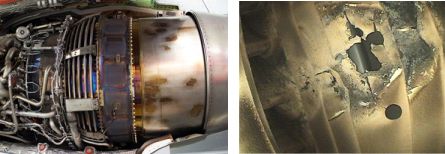
The parameter of gas flow unevenness at the outlet of the combustion chamber in Vibropassport allows detecting fuel injector coking or distortion of the flame at an early stage and thus minimizing losses.
In combustion chambers with serviceable fuel injectors the flow unevenness parameter rarely exceeds 2.0, while coking of only a single injector has increased its value to 5.8
